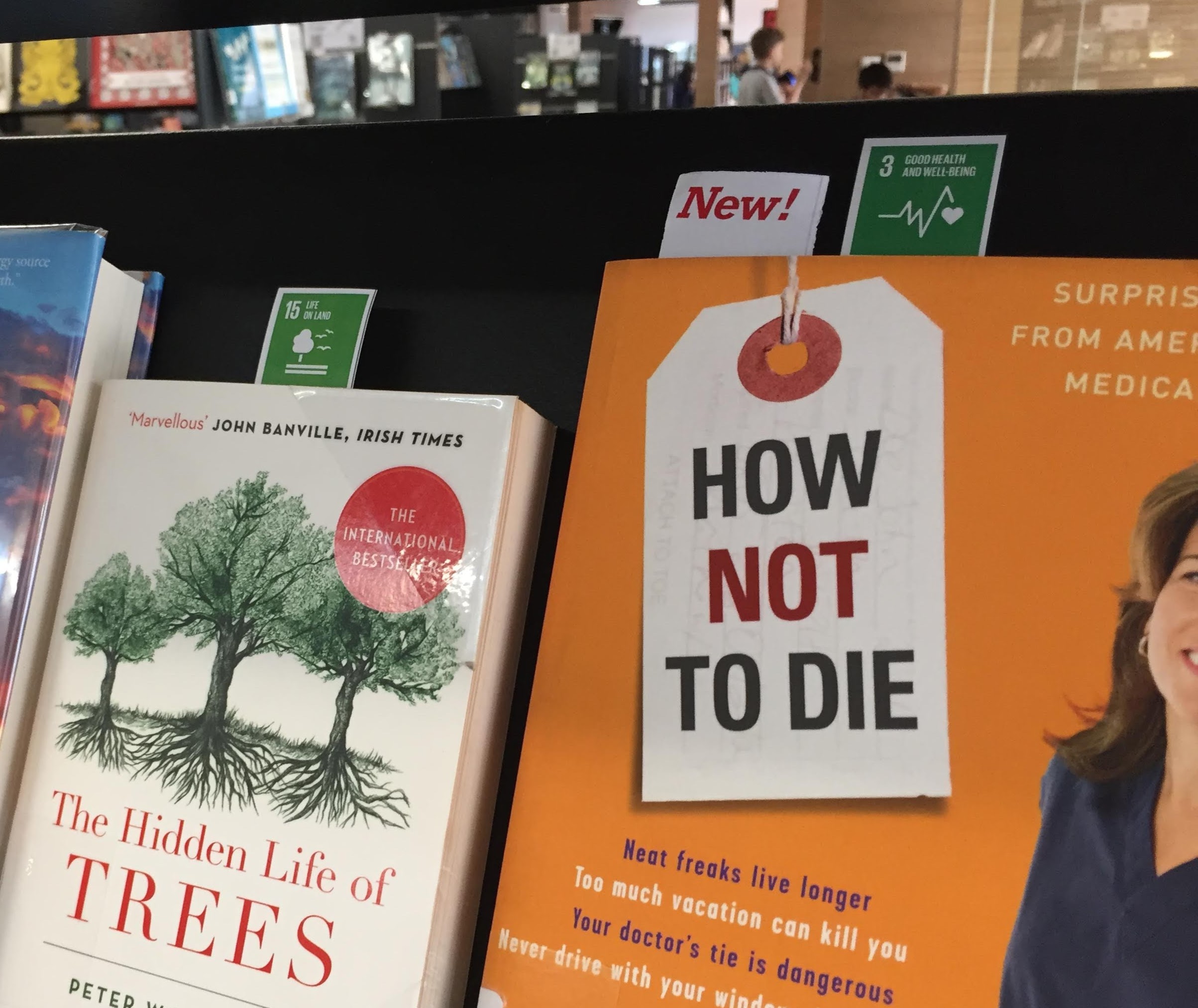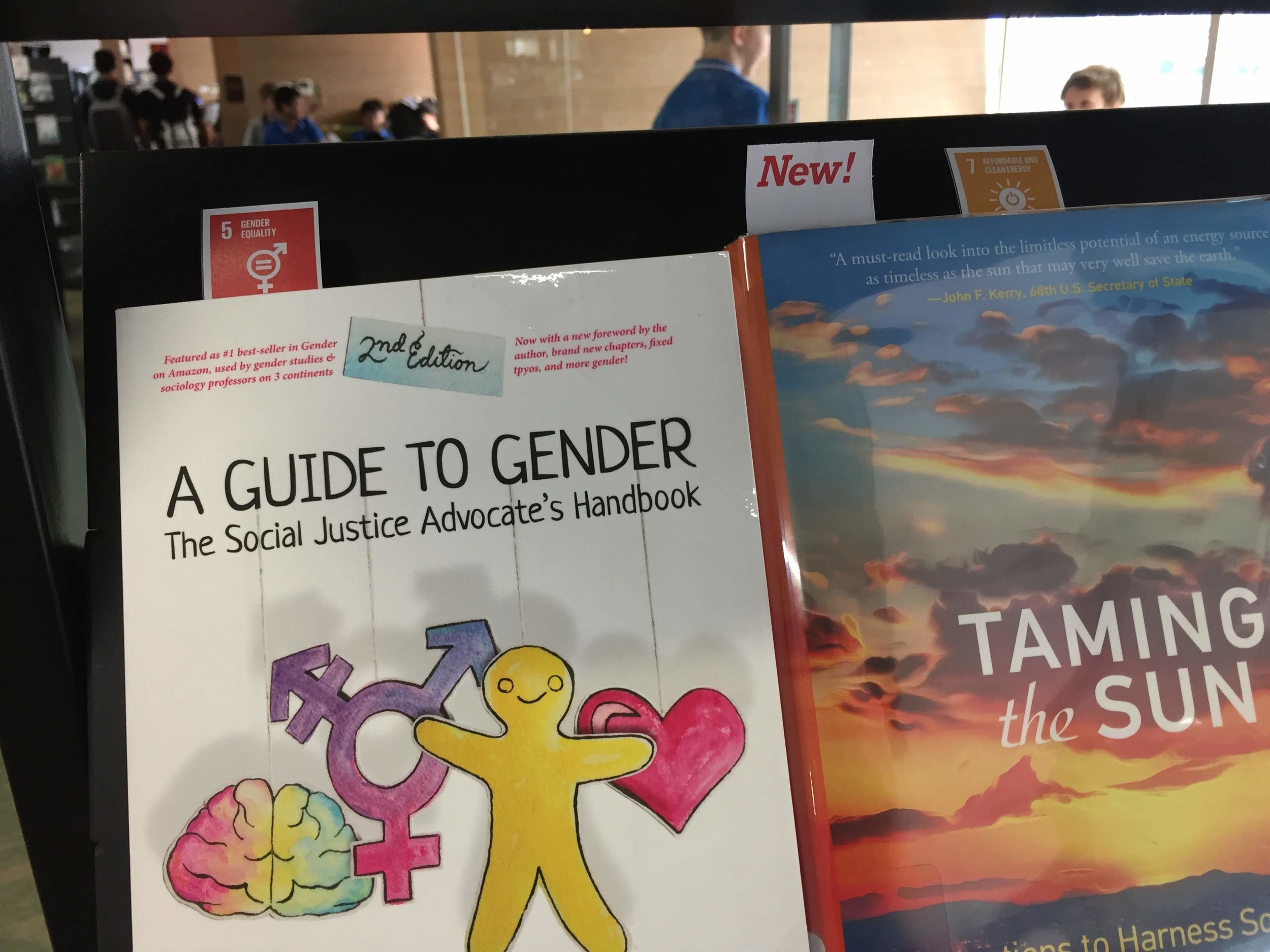The UN Sustainable Development Goals are spreading throughout the curriculum, not just at IB World Schools, but everywhere.
Last month on April 2nd (International Children’s Book Day — the birthday of Hans Christian Andersen) the SDG Book Club was launched at the Bologna Children’s Book Fair. The initiative is jointly sponsored by the United Nations, IFLA (Int’l Federation of Library Associations), IBBY (Int’l Board on Books for Young People), the IPA (Int’l Publishers Association), the International Booksellers Federation, and the Bologna Children’s Book Fair.
Every month new booklists (aimed at children aged 6-12) — in the 6 languages of the UN: English, Arabic, Chinese, Spanish, Russian, and French — will be announced.
The goal? 17 months to read 17 books, one per month until September 2020 (which is when Moscow is hosting the 2020 biennial IBBY Conference).
So how was the first round of books for Goal #1: No Poverty?
Arabic:
Aina da’at, Author: Mohanned Al Akoos
The Wonder Bag, Author: Omaima Ezadeen
The Strange Wondrous House, Author: Omama Allawati
Chinese:
Adventures of Sanmao, Author: Zhang Leping
The Prince and the Pauper, Author: Mark Twain
Ah, Xiangxue, Author: Tie Ning
English:
Serafina’s Promise, Author: Ann E. Burg
The Last Stop on Market Street, Author: Matt de la Peña
A Chair for My Mother, Author: Vera B Williams
The Happy Prince, Author: Oscar Wilde, Illustrator: Maisie Paradise Shearring
French:
Jouer Aux Fantômes, Author: Didier Levy, Illustrator : Sonja Bougaeva
L’usine, Author: Yael Hassan
La Pauvreté et la Faim, Author: Louise Spilsbury, Illustrator : Hanane Kai
Ma Robe Couleur de Fruits, Author: Myriam Gallot, Illustrator : Julia Wauters
Russian:
The Tale of the Fisherman and the Fish, Author: Alexander Pushkin
Vanka, Author: Anton Chekhov
The Cat’s House, Author: Samuil Marshak
Spanish:
A la Sombra de los Anacardos, Author: Antón Fortes Torres, Illustrator: Simona Mulazzani
De Noche en la Calle, Author: Ángela Lago
No Comas Renacuajos, Author: Francisco Montaña Ibáñez
Un Punado de Semillas, Author: Mónica Hughes, Illustrator Luis Garay
From Wikipedia: “The name Sanmao means "three hairs" in Chinese, or "thirty cents" (a reference to his poverty). While the character has undergone a number of transitions over time, he has always been drawn with the trademark three strands of hair, which implies malnutrition as a result of poverty.”
Well, the English list is okay, though “The Happy Prince” is maybe a weird choice. Or, should I say, an old choice? Was to increase the accessibility? (Yes, “The Happy Prince” is widely available free on the internet.) Was that a reason behind the Russian choices? i.e., Pushkin (1799-1837), Chekhov (1860-1904), and Marshak (1887-1964).
I’m also wondering about the Chinese choice of Mark Twain’s “The Prince and the Pauper.” Yes, a pauper is poor, but is it a well-known book in China?
In some ways, it would have been interesting to make one of the English choices a translation of a Chinese “Sanmao” story as that character is definitely a representation of poverty.
At NIST we have made little bookmarks to insert into books we have on display in order to highlight SDG connections, especially new books.
We simply place these bookmarks into appropriate books on display.
We also use our digital signage to highlight connections between books and SDGs — especially on special days (Int’l Women’s Day) and weeks (Earth Day/Week).
NB: Nadine Bailey has made one of her wow Libguides for the SDGs — see https://library.wab.edu/SDG.








